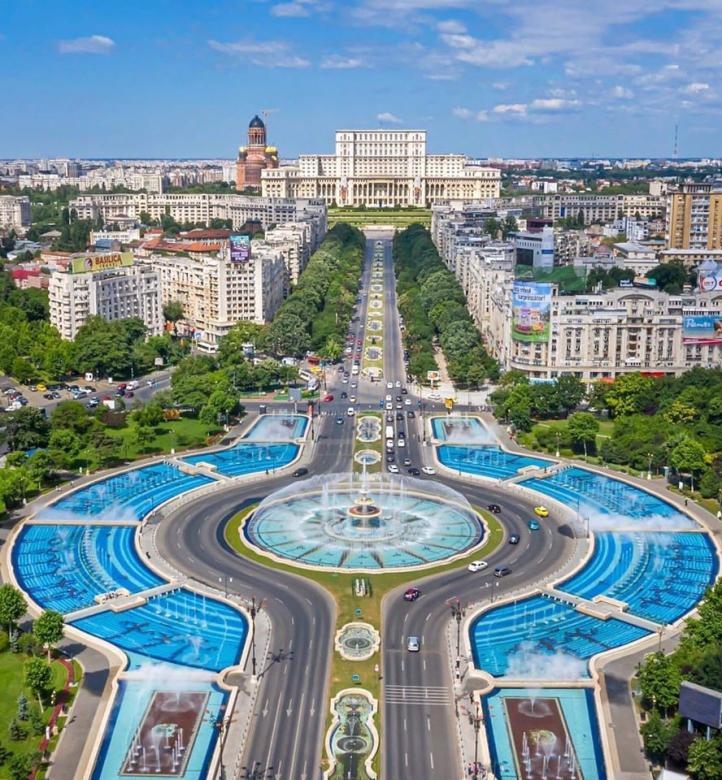About Us
About
Hydroinformatics focuses on the application of information and communications technologies, to address problems in the water industry, water resources management, and other fields connected to the aquatic environment. New trends, like the digital transformation of urban water systems, smart water networks and smart cities demand multi-disciplinarity and interoperability, to ensure a sustainable management of water resources. As the Hydroinformatics scientific community continuously grows, its interests encompass a wide range of topics, from the numerical modelling to the development of new sensors and tools, the interpretation of increasing amounts of data, the analysis and management of complex water systems, the integration of models, data and controls for practical applications.
The work of the IAHR/IWA Joint Committee on Hydroinformatics and of several IWA Specialist Groups has highlighted the importance of knowledge integration among scientists, practitioners and technology experts, in order to tackle the complex challenges of water management in a changing world.
Presently, in addition to the ever-present threat of climate change, the COVID-19 pandemic also changed our daily lifestyle. The repercussions of these recent events cannot be ignored. For example, in water supply, the impact of shifting a portion of the water demand from the industrial sector (corporate office buildings) to the residential districts from which people now remotely work, has the potential to change the demand patterns, thus the water distribution of urban areas.

Organizers
14th International Conference on Hydroinformatics − HIC 2022 is jointly organized by two technical universities in Bucharest, represented by members affiliated to two similar Hydraulics Departments, namely:
- Department of Hydraulics, Sanitary Engineering and Environmental Protection, Technical University of Civil Engineering Bucharest – UTCB
and
- Department of Hydraulics, Hydraulic Machinery and Environmental Engineering, University POLITEHNICA of Bucharest – UPB
Both universities organize BSc degree, MSc degree and Doctoral studies.
UTCB has about 5,000 students in 7 faculties, covering the Civil engineering; Industrial and agricultural engineering; Building services; Hydrotechnics; Railways, roads and bridges; Geodesy (https://utcb.ro/en/)
UPB has about 30,000 students in 15 faculties, covering the Automatic control and computer science; Electrical engineering; Energy engineering; Electronics, telecommunications and IT; Aerospace engineering; Mechanical engineering and Mechatronics; Robotics; Transports; Material science and engineering; Applied Chemistry; Medical engineering; Applied Sciences; Biotechnical systems engineering; Business engineering and management (https://upb.ro/en). The Department of Hydraulics, Hydraulic Machinery and Environmental Engineering coordinates a master program in Hydroinformatics and Water Engineering.
Both universities have a long common history, being the oldest technical universities in Romania, originating from the first Higher Technical School founded in 1818, in Bucharest. Thus, in 2018, UPB and UTCB celebrated their bicentenary.
Both Hydraulics Departments originated from the same Hydraulics Department founded in 1920, then split in 1948, when UTCB separated from UPB. Although separated, the Hydraulics Departments maintained a fruitful collaboration, celebrating their centenary in 2020.
Most members of the HIC 2022 National Organising Committee are attached to UTCB and UPB. Other members of the same committee are affiliated to Fluid Engineering Departments from the „Politehnica” University of Timisoara and „Gheorghe Asachi” Technical University of Iasi, as well as to different Romanian Water Companies and national associations targeting the Water Industry.
Bucharest
Bucharest is the capital and largest city of Romania.
It presents a unique mix of West and East (with its people speaking a Romance language and belonging mostly to the Greek Orthodox Christian faith), as well as of Old and New (the city centre combines medieval, neoclassical and art nouveau buildings with utilitarian communist era architecture and new skyscraper office buildings). It is the major cultural, economical and financial centre with more than 2 million inhabitants (about 3 mill. inhabitants in the Metropolitan Area).

In Bucharest, English is widely understood and spoken.
The first mention as the Citadel of Bucharest dates from 1459, when it became the residence of the famous Wallachian Prince Vlad III the Impaler (that presumably inspired Bram Stoker’s character Dracula).
The motivation for the attendees relies on the unique culture mix and affordable prices in Bucharest and in the whole country, as well as on the proposed Visits of Bucharest and Post-Conference Tours outside Bucharest.
In Bucharest, English is widely understood and spoken.
Like any other EU capital city, Bucharest is crowded and even if criminality is rare, one can easily observe beggars present in busy places. However, all hotels, clubs, bars and restaurants are definitely safe and reliable. Taxis are reliable and visible marked in yellow. Metro is reliable (there is constant survey inside the metro, and in metro stations). Money can be exchanged safely in banks and at ATM’s, credit cards are widely accepted.
Romania
Romania is part of the European Union since 2007, thus Romania is aligned to the EU laws and directives. European citizens can travel freely to Romania. Non European citizens need a visa as requested in any EU country.
The major difference between Romania and founding EU countries is that Romania still uses its national currency, called „LEI” – plural and „LEU” – singular. The currency rate fluctuates slightly, so you need to check the National Bank of Romania exchange rates (https://www.bnr.ro/Exchange-rates-1224.aspx): for example, 1 euro (EUR) is about 5 lei (let’s say 5 LEI/EUR, and the other way around – 1 LEU is about 0.2 EUR); 1 US dollar (USD) is about 4.3 LEI (or 1 LEU is 0.23 USD).
